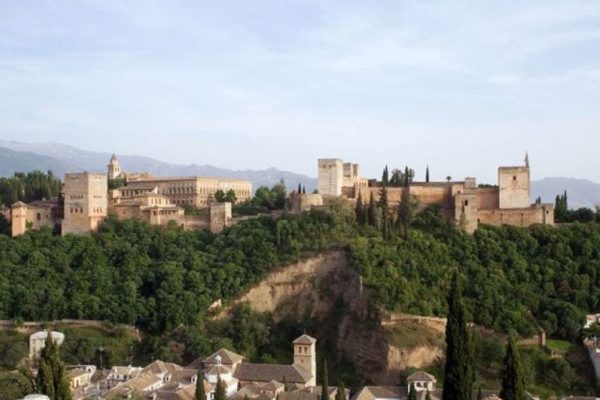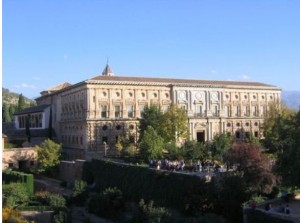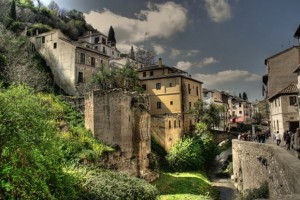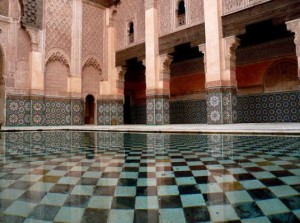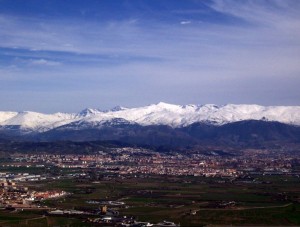Granada
Alhambra and much more
The Spanish city of Granada, located in Andalusia, is in the southeast of the country and it is a popular destination for many tourists. And this is because the city, from a tourist point of view, has a lot to offer. Moreover, the temperatures are generally fine and there is often hot summers and falls in contrast to a Winter with very little precipitation. We show below why we highly recommend to visit the city.
The city itself has a population of 236,982 people, and including the surrounding areas the population is about 472,638 people. This makes it the fourth largest city in Andalusia, after Seville, Malaga and Cordoba, and the 17th largest city in Spain. Granada is 738 meters above sea level, at the bottom of the Sierra Nevada Mountains. Centuries ago, it was the capital of the Kingdom of Granada.
Popular destination
Due to the fact that one of the most famous monuments of Spain, the Alhambra, is located in the city, the city is a popular destination for many tourists. The Alhambra is a huge historical palace full of remnants of both Moorish and Catholic culture.
But Granada is also well known for its prestigious university: Universidad de Granada, and that makes it one of the most important Spanish university towns, along with Salamanca, Burgos and Santiago de Compostela. Furthermore, Granada is very famous for its cheerful nightlife.
The Spanish Inquisition
In the 7th century, the region around Granada was in hands of the Moors. The decline of the Moorish Empire in 1492 was one of the most important events in the history of the city. There was an abrupt end to 800 years of Islamic control on the Iberian Peninsula. The Muslims and Jews were forced to be sorry by the Catholic Monarchs (Ferdinand II of Aragon and Isabella of Castile). Those who refused to convert to the Catholic religion, were prosecuted and expelled from the country and those who survived to the Spanish Inquisition fled to North Africa. The Arabic language lost its role in Granada and was replaced by the Spanish language, and the mosques were replaced by Catholic churches.
Rich city
In the 15th century, Granada was one of the richest cities in Europe, with about 50,000 inhabitants at the time. The Moorish Alhambra palace was originally built in the Moorish times, during the reign of the Sultan Alhamar. However, the current Alhambra was constructed in the 17th century and functioned as the new government palace for the city. After the decline of the Moorish Empire, the new unified Spain was able to grow soon and it became one of the most powerful countries in the world.
Palace of Charles V
The Alhambra was a palace and a fortress of the Moorish rulers of the Kingdom of Granada. It is located on a plateau on the south eastern border of the city. The expansive complex was seen as a very important booty by the Catholic Monarchs after the conquest of the Kingdom of Granada in 1492. Their grandson, Charles V, ordered the construction of a Renaissance palace in the middle of the Alhambra after his visit to Granada in 1526 , and part of the Alhambra was demolished.
UNESCO limits, book your tickets NOW!
Because of the finely executed Islamic art and the very large value of the treasures, the Alhambra is a popular attraction for Art students in Europe. Inside of it, there are beautiful decorations that are attributed to Yusuf I. Many treasures have been restored and are a good example of the Moorish art in the Continental Europe.
However, those who want to visit the Alhambra, must keep in mind that UNESCO has set some limits in terms of visitors: per day, only a certain number of visitors are allowed in the Alhambra, so booking a visit in advance is more than recommended.
You can order the tickets on the Alhambra ticket line.
Generalife Palace and Generalife
Apart from the Alhambra, there is a lot to see, such as the Generalife Palace, the former summer palace Nasrid sultans of Granada. This palace and its surrounding gardens were originally built the reign of Muhammad III (1302-1309). Initially, this palace was linked to the Alhambra by a covered walkway across the ravine that separates them now. The construction of the present gardens were begun in 1931 and completed in 1951 by Francisco Prieto Moreno. The trails has a traditional style with pebble mosaic: white pebbles from the river Darro and black pebbles from the Genil.
In the gardens of the Alhambra stands the Parador de Granada, the former monastery of St. Francis where the Catholic Monarchs were buried.
The most beautiful building in Granada consists of a fort, the royal palaces and the Summer Palace with its enchanting gardens. In these gardens you will find the Generalife. Inside, you will find an abundance of wonderful treasures. Highlights of the Alhambra are the Mexuar, the oldest part, the patio with an impressive fountain with marble lions and the Renaissance Palace of Charles V.
Low rainfall
Summers in Granada are often very hot and dry, and the temperature may be sometimes above 35 Celsius degrees. On the other hand, the winters can have very low temperatures, which might be quite cold for Spanish terms. The city has very little rainfall, and especially summers are extremely dry, with less than 10 millimeters of rain per month.
Albayzin, the old Arab quarter
It is the old Arab quarter where finest examples of medieval Moorish houses can be found. The district is on the hill and it calls for your attention due to the big amount of white buildings that are there together. The houses along the narrow streets have one thing in common, they all have charming courtyards with fountains and greenery. Initially Moors lived here, and later Christians, Jews and Muslims lived together in harmony. From the hillside, you get a beautiful view of the Alhambra and Sierra Nevada in the distance.
The Cathedral of Granada
This cathedral is the main cathedral of Granada and is quite large. But because of the many big buildings surrounding, a large part of it remains hidden. The cathedral dates from 1521 and is located in the heart of the city. The construction was initiated by the Catholic Monarchs Ferdinand II of Aragon and Isabella I of Castile and it is a masterpiece of Renaissance architecture.
Federico Garcia Lorca’s Museum
Federico Garcia Lorca (1898-1936) is one of the most famous inhabitants of Granada. This writer, poet, painter and musician became widely known for his poetry and plays and in the 20s he also became internationally known. During the Spanish Civil War, he was assassinated by a nationalist supporter of Franco. The museum is housed in the house where Lorca’s parents stayed in the Summer and that is the place where he wrote some of his most important works too. The collection includes manuscripts, photographs, compositions and pieces of furniture.
Tip: visit the Arab baths in Granada
If you have some time, you should visit the Arab baths in Granada because is definitely worth it. And cheap too: A visit to the baths with massages and aromatherapy is just 20 euros!
Tip: enjoy the slopes of the Sierra Nevada in winter and early spring
Within a half hour drive from the centre, you can find the ski resort of Pradollano, Granada, where the highest peaks of the Spanish mainland can be found: the Mulhacen (3482m) and the Pico Valeta (3398m). On a clear day, you can see the Mediterranean Sea from the top. The area offers 83 km of slopes, 23 ski lifts and it is open from early December to April, depending on the snowfall.
